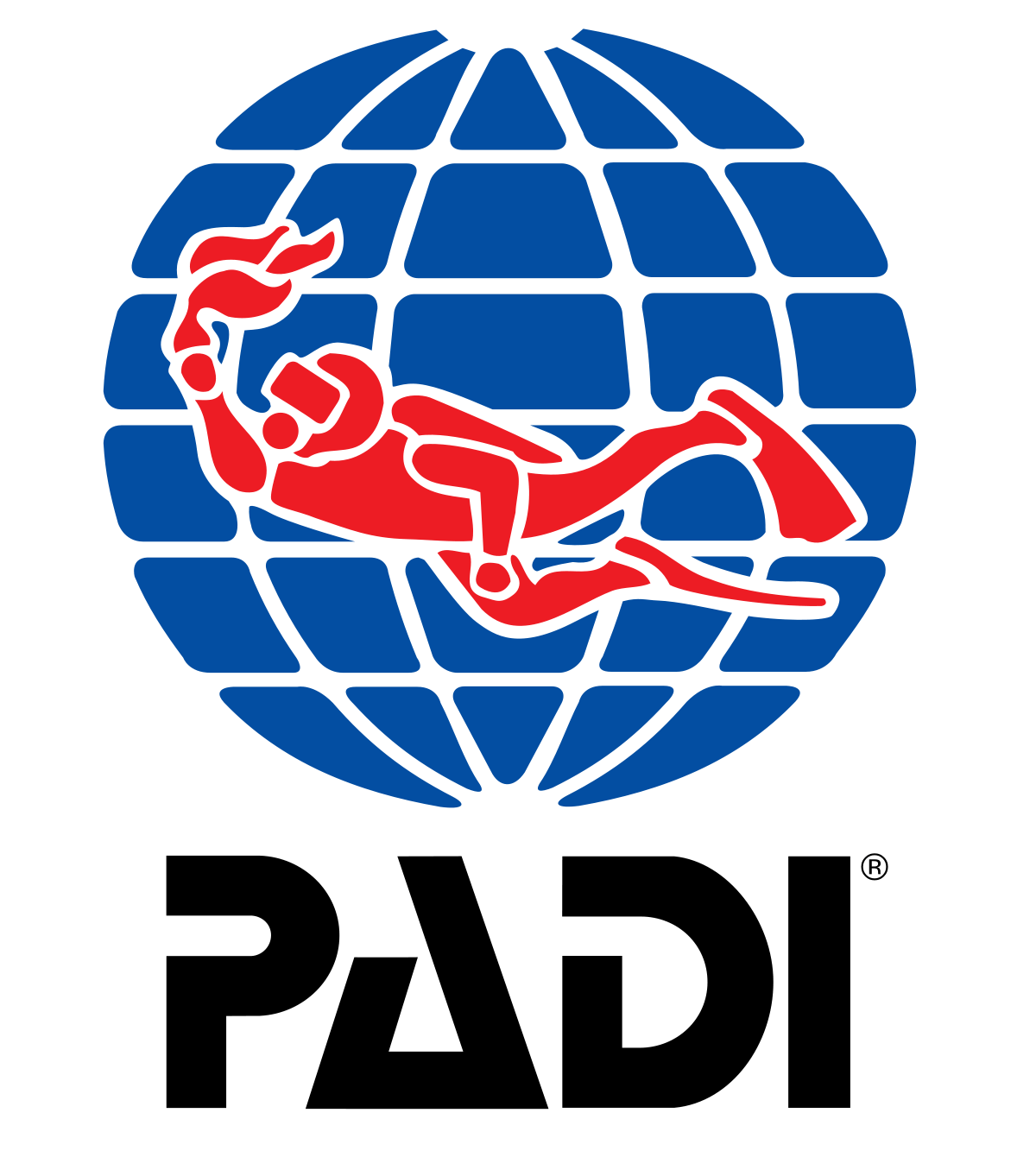How to Choose Your Perfect Scuba Mask and Snorkel
As a PADI Divemaster candidate, you should already have or be looking into purchasing the ABC basic equipment of diving. If you are unsure what this is, take a look at our blog: What Diving Equipment Should I Own as a PADI Divemaster? In this post, we will cover 2 out of the 3: the scuba mask and snorkel and how to choose the perfect ones for you. There are tons of choices out there on the market all having their own stand out features. It can be difficult to figure out what suits you best. Choosing any new dive equipment is fun and a great way to show off your personal style with a signature colour or design. Alongside this, we have shared a few practical considerations and tips on what to look out for when choosing your mask and snorkel.
Choosing your scuba mask
The main reason why we wear a scuba mask in diving is because our eyes cannot naturally focus underwater. The scuba mask creates an artificial air space that allows us to see clearly underwater. Scuba masks have been developing for years and nowadays, they provide users with a ‘maximum field’ giving better downward and wide angle views, taking full advantage of the eye’s natural vision.
Here are the names of the parts of a standard scuba mask:

Fit is extremely important when choosing a scuba mask. You need it to match your specific face and facial contours correctly. Because of this, there are two tests you should do to before purchasing a mask to ensure it feels comfortable for you:
1st Test
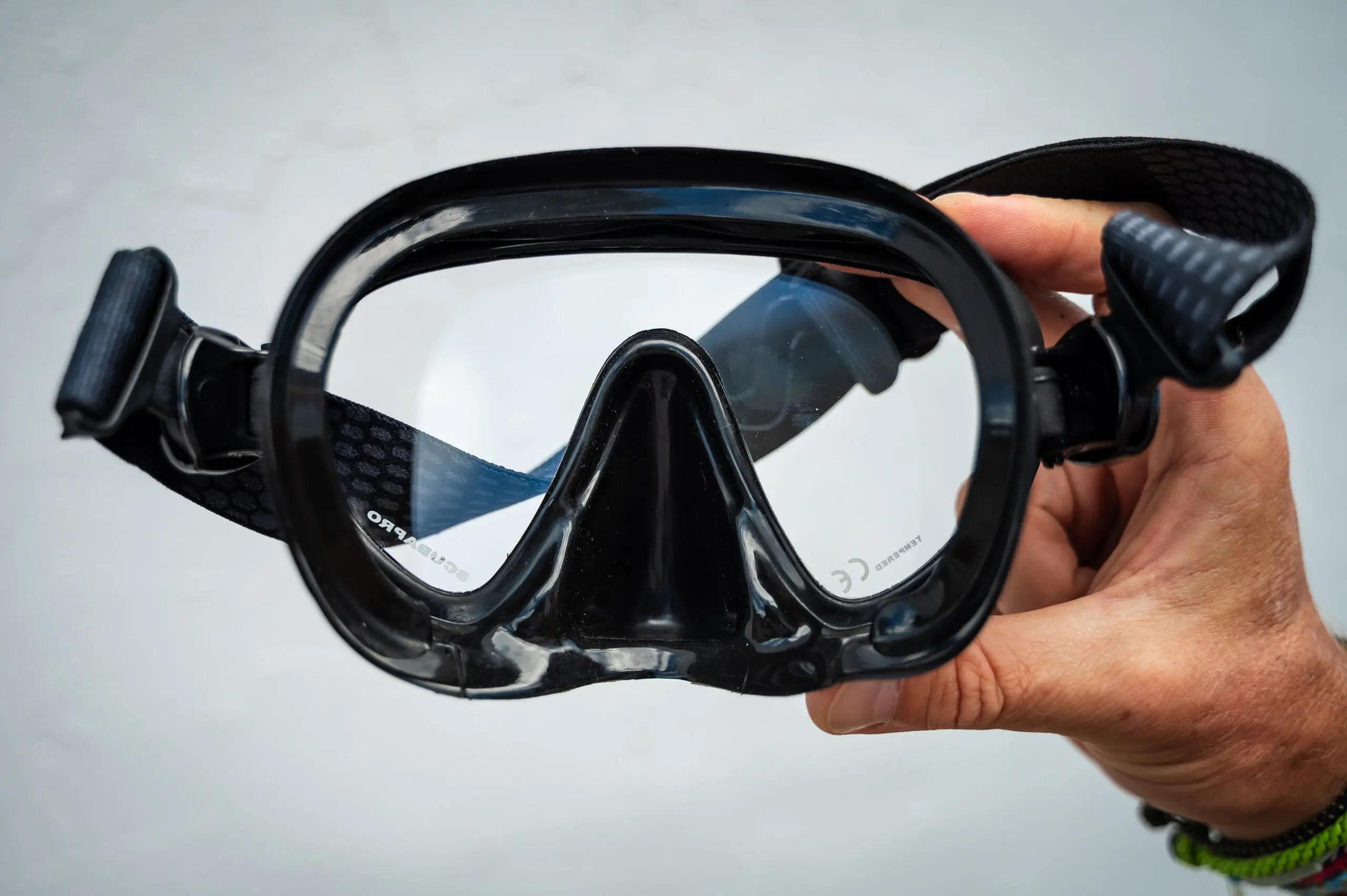
Remove the head strap or move it in front of the face plate

Holding the mask against your face looking forward

Inhale slightly through your nose
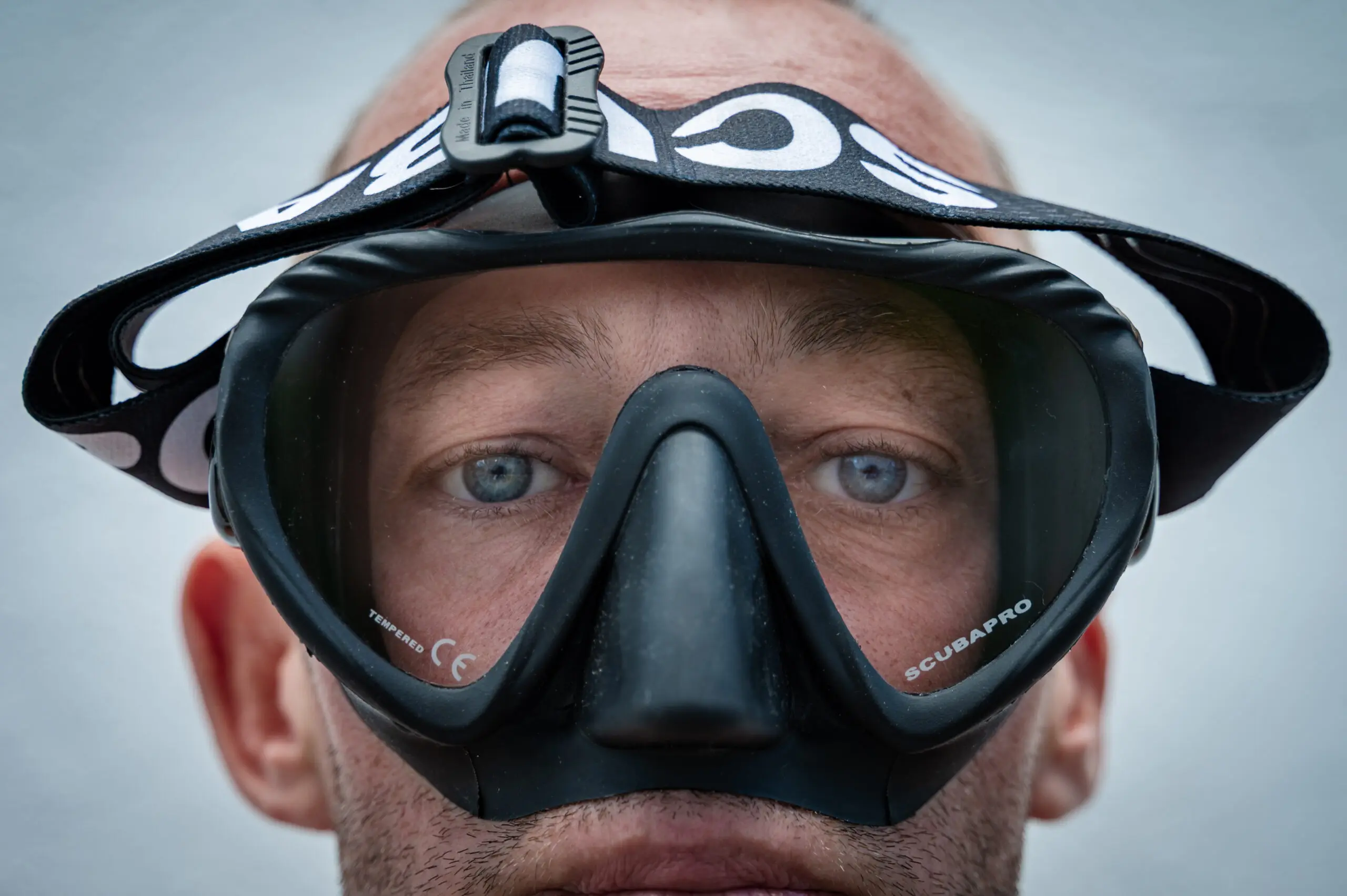
Let go your hands from your mask
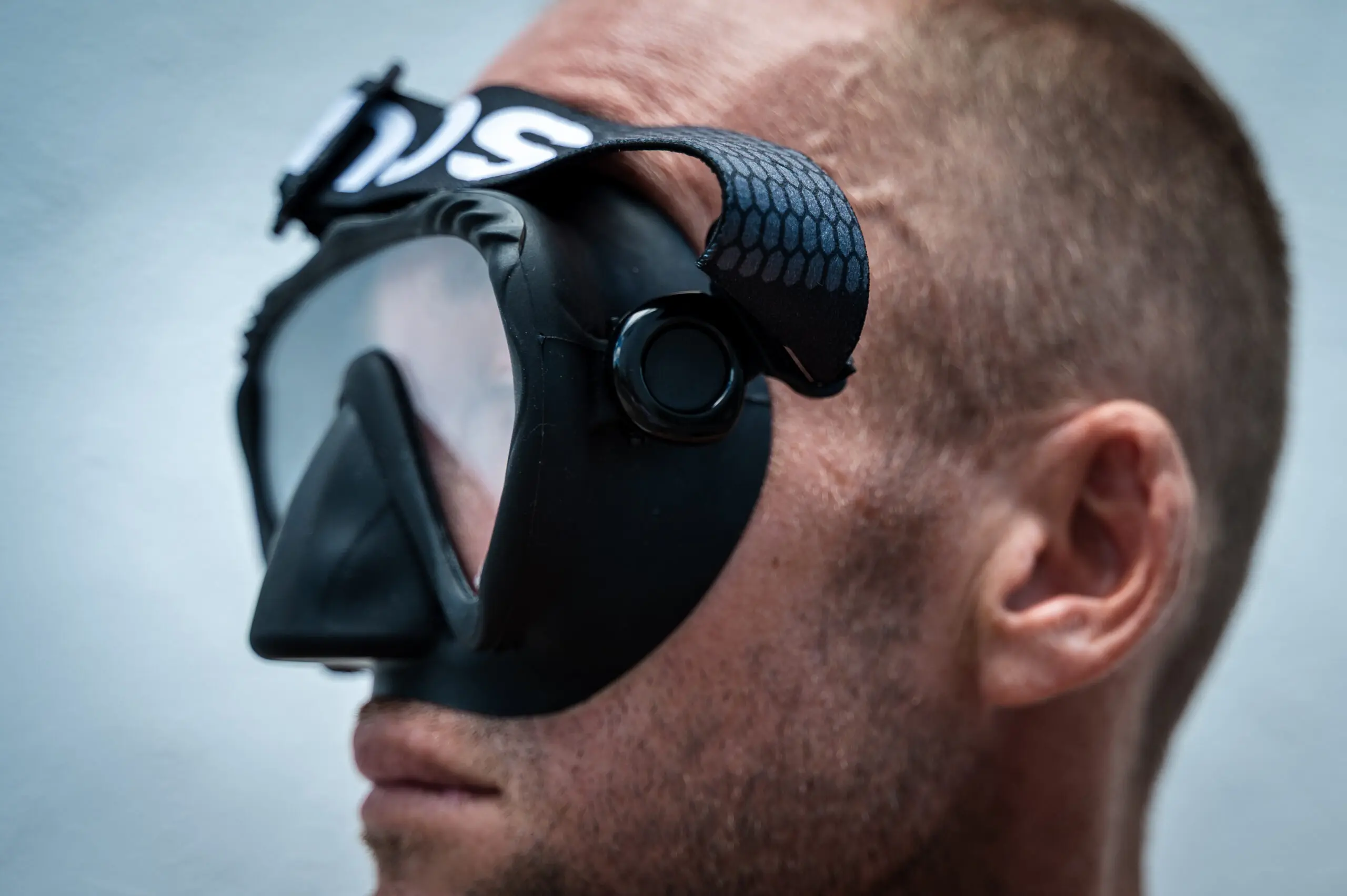
Shaking or turning your head. Check if the mask is able to stay on your face comfortably without losing suction or coming loose
2nd Test

Remove the head strap or move it in front of the face plate
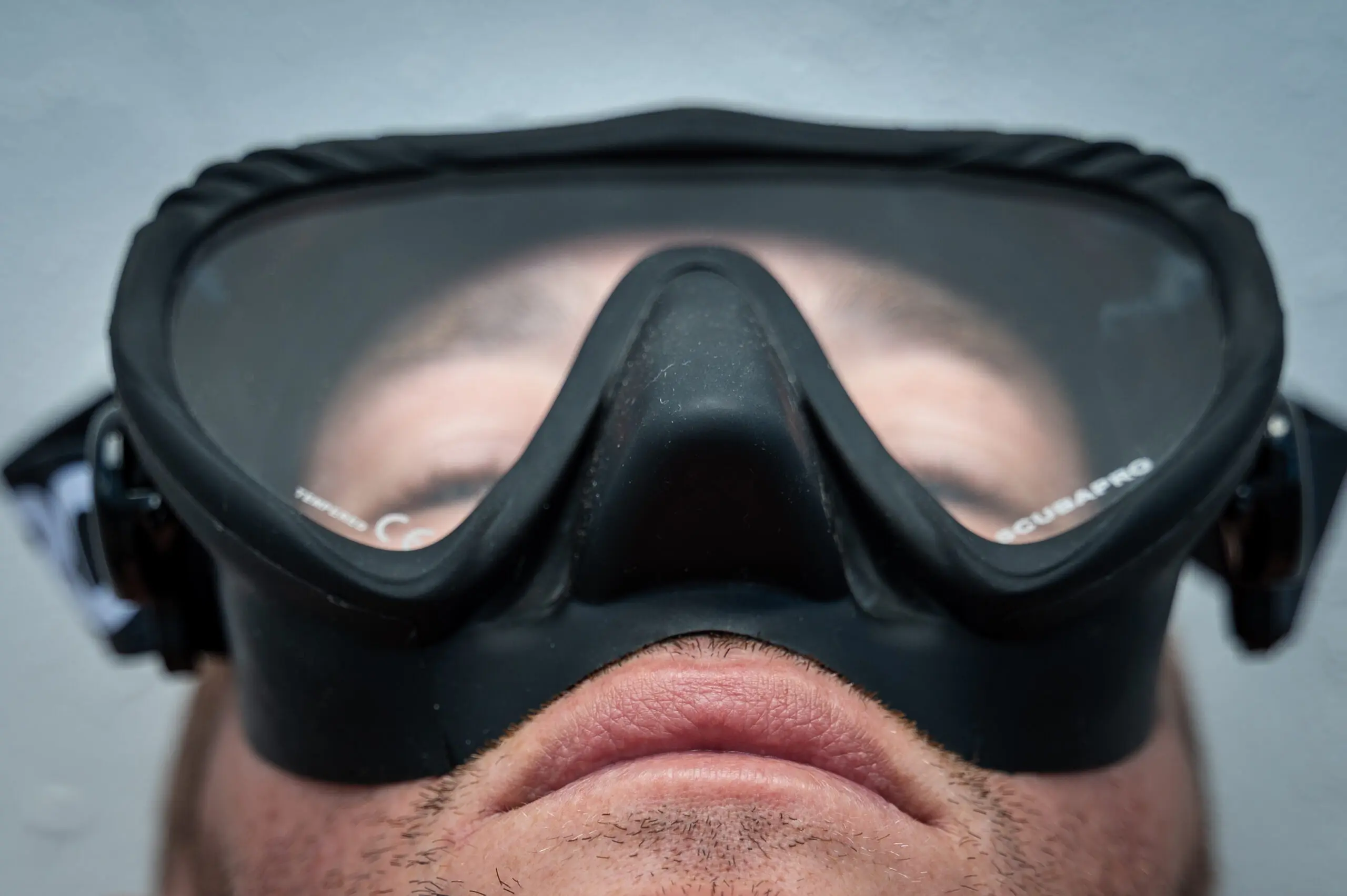
Place the mask lightly against your face and look up
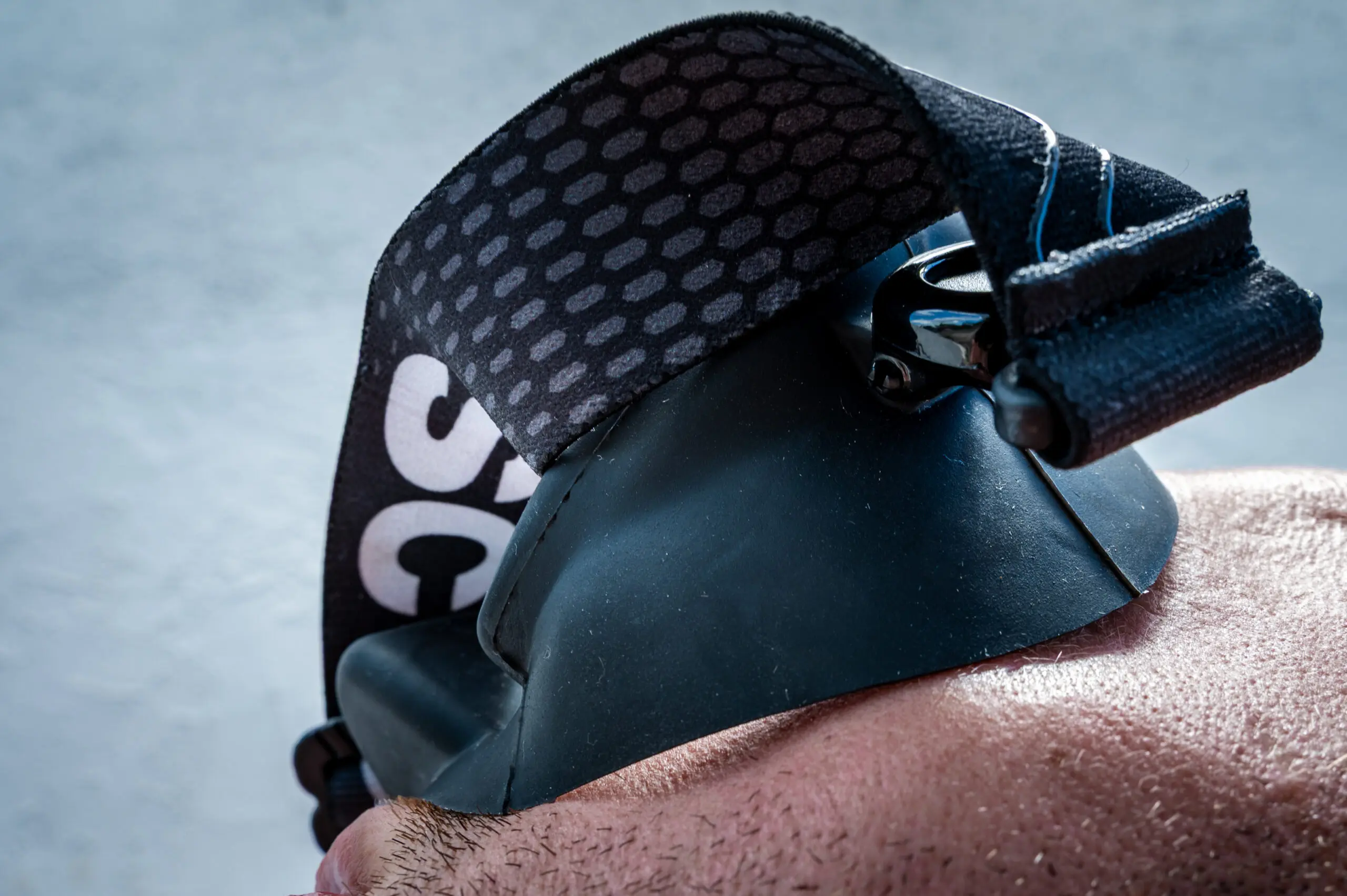
Check that the entire edge of the mask skirt rests evenly against your face so that it matches the contours of your face
So you now know how to find a mask that fits correctly. There are couple other important things to consider also when buying a mask:
Firstly, you want to make sure that the lenses are made of strong tempered glass to withstand the pressures underwater. Furthermore, tempered glass is much safer as if it breaks, it clings together forming fewer sharp slivers. Also, it is good to see that you can adjust the head strap of your mask. Popular masks tend to have a buckle on the sides of the mask that you can snug and release making strap adjustment seamless.
On top of this, there are a few other features to consider that will suit your personal preferences:
What if I have problems with my vision?
There are few ways to accommodate vision correction whilst diving:
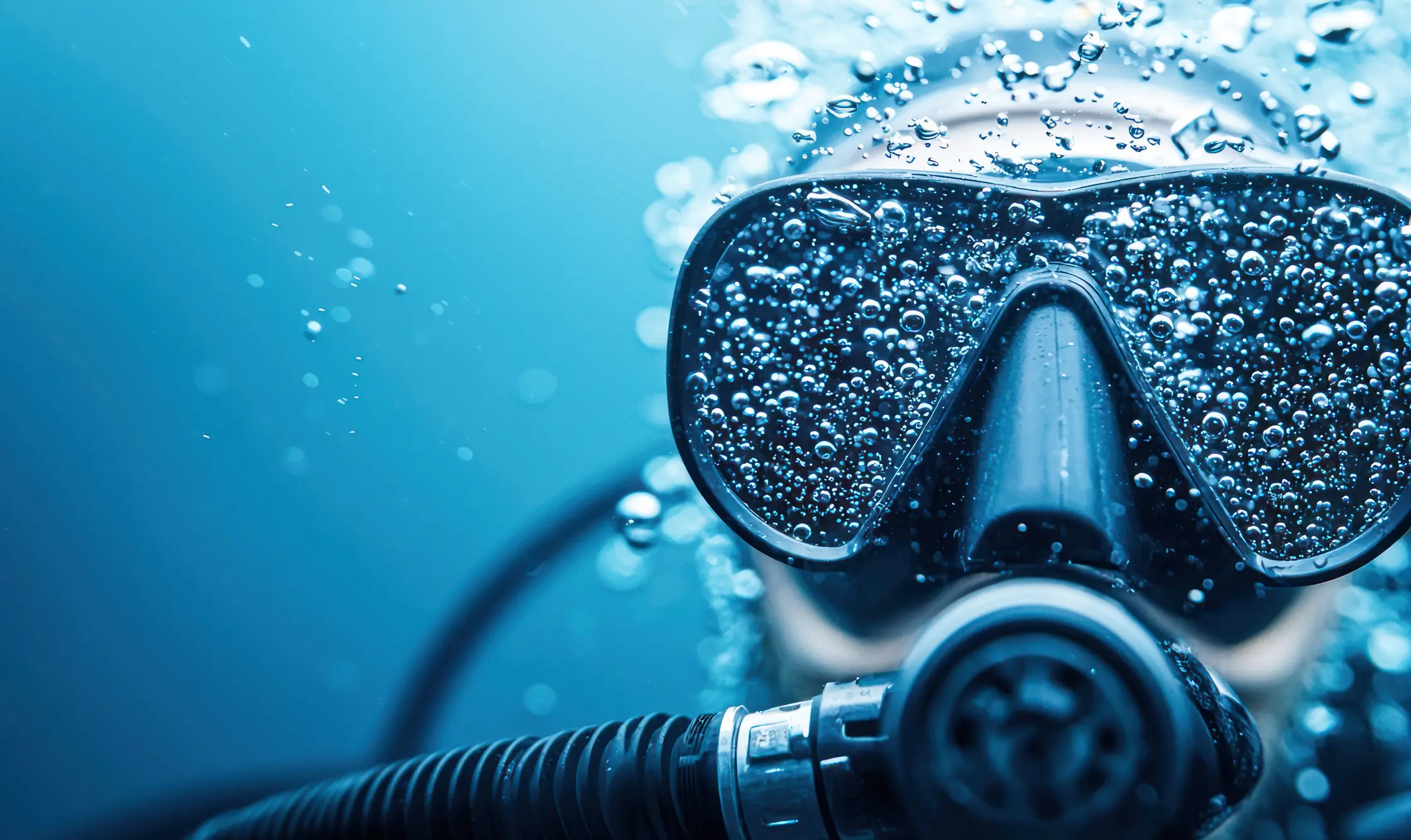
Additional features
As well as the important stuff above, it’s good to understand some additional fine details of scuba masks that separate high-end masks from the lower-end masks. Equipment is an investment for your safety and comfort underwater and incorporating a few of these details to your final decision may be valuable:
Choosing your snorkel

Another piece of the ABC basic equipment of diving you need to have with your mask is a snorkel. But why is this required? We don’t scuba dive with a snorkel. It is mandatory for safety reasons, especially for a PADI Divemaster. The reason being is that it is very possible that you may surface the dive well away from the boat or the shore with little or even no air in your tank. In order to efficiently swim on the surface to the exit location, a snorkel is extremely helpful to help you conserve energy and handle swimming in conditions that are not easy e.g. if there are large waves or strong surface currents.
Snorkels consist of a plastic curved barrel (tube) with a silicone mouthpiece at the end. Though there a few things to consider when purchasing the right snorkel:



